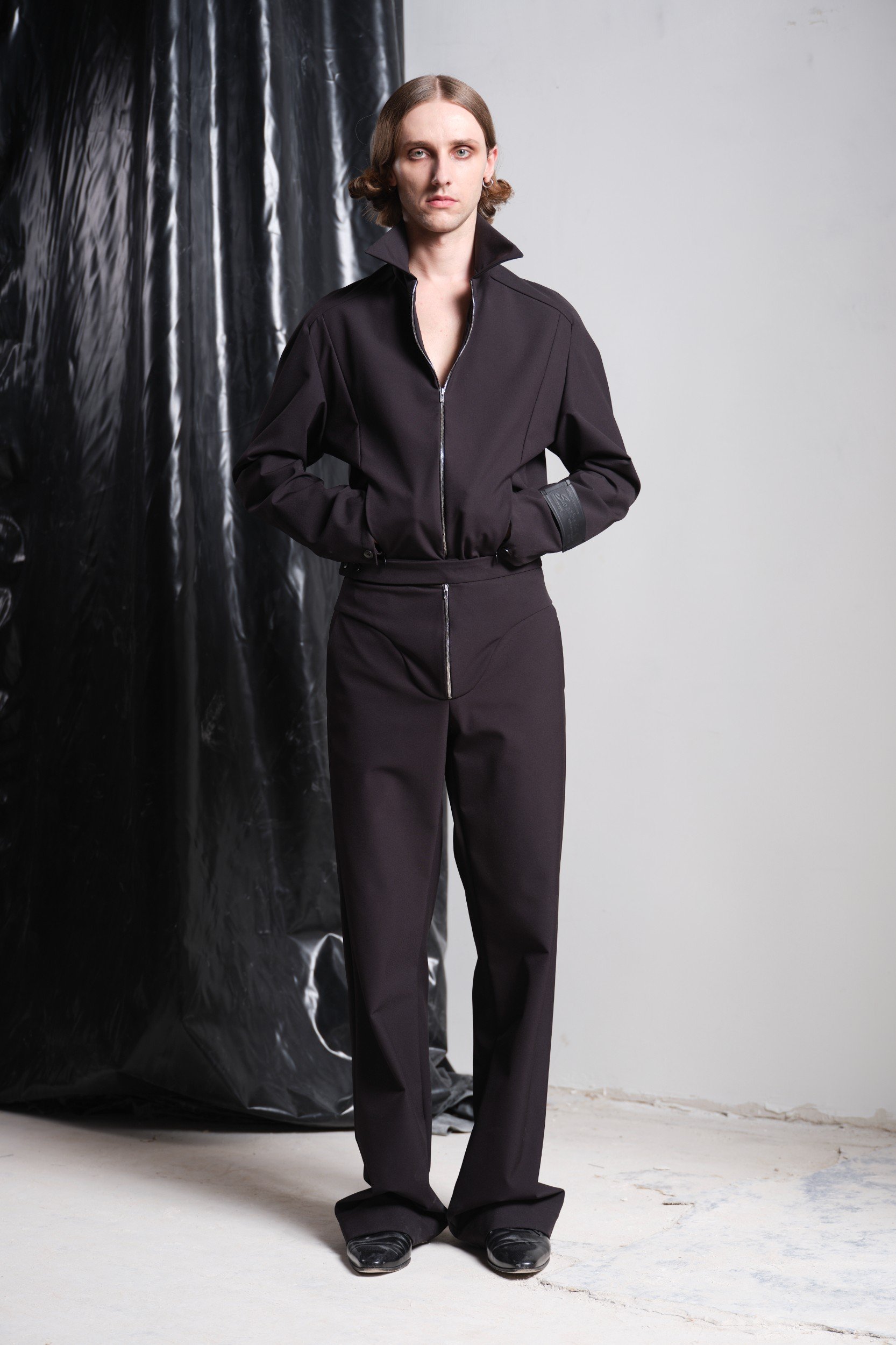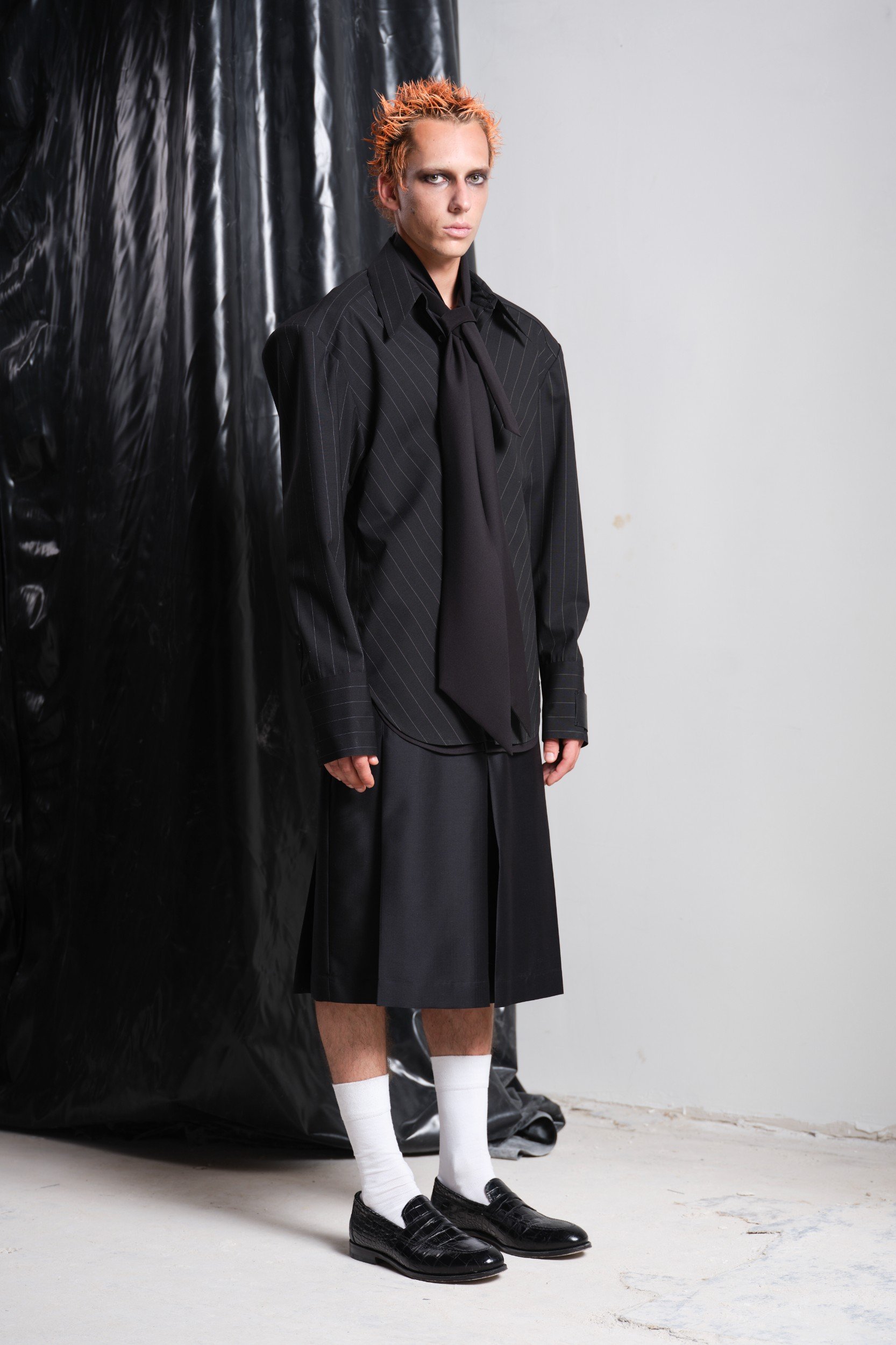Richert Beil SS26
What does it mean to grow? Neoliberal economics and the rhetoric around luxury brands would have you believe that all growth is good, something to pursue indiscriminately and with a “the higher the better” mindset. But coming into their 11th year of operation, Berlin-based duo Jale Richert and Michele Beil took a more considered view. Having just outgrown their last studio space, the two drew from being on the precipice of change for their Sping/Summer 2026 collection, a reflection on transformation and growth.
With the brand’s characteristic social consciousness, the collection takes its name “Mileuschutz” from a set of German anti-gentrification laws that literally translates to “milieu protection”. The show was hosted in the debris-filled rooms of a shopfront under construction situated in the preserved neighbourhood of Kreuzberg, the home of the designers’ new studio.
For Richert and Beil, urban planning rules became a metaphor for the importance of protecting one’s original values amidst growth, and the deliberate mindfulness required in doing so. On a brand level, this translated to a commitment to its original principles of quality, inclusivity and reliable sourcing, things vulnerable to getting lost in the self-serving structure of the fashion system.
The two showed this through a reaffirmation of house codes: monochromatism, precise, clean lines, unsettled gender lines and subversive tailoring. Whilst the latter has always been one of their strengths, this season saw the complete inversion of the rules of suiting. Stone-faced models appeared in hybrid blazer and dress shirts, in suit pants whose seam lines mimicked underwear, and in bottoms with garters affixed to the outside layer. Whether through a tie styled to be haphazardly tucked out of a blazer, or the lingerie motif, Richert Beil turned tailoring quite literally inside-out.
Despite the collection’s precision, the designers also embedded an air of romance via the a dark floral motif. Upon arrival, guests were each given a plum coloured rose that was later seen as a graphic on shirts and blazers. Whilst a nod to Milieuschutz’s precocupation with environmental preservation, the decaying flower also served as an emblem of the cycle of growth and decay: what is born must eventually die.
However as the collection’s name suggests, this cycle is not one that is only individual, but communal. The duo drew influence from wider German heritage, both past and present, through merging traditional ‘Tracht’ elements with fetish wear. Latex lederhosen met bdsm-inspired suspenders as the two combined the historical and contemporary, an ode to the temporal nature of growth as something that impacts the wider social fabric.
Self-reflective and self-disciplined, Richert Beil’s SS26 was an assertion to its wearers that the process of growth won’t corrupt its core. A promise and a humble request to trust, they presented a collection steeped in maturity, poeticism and confident self-assertion.
Words by SHARYN BUDIARTO





































